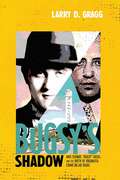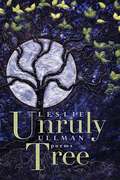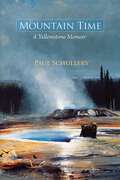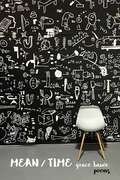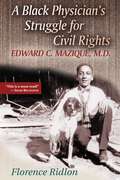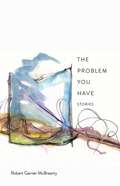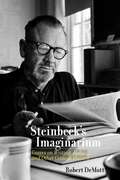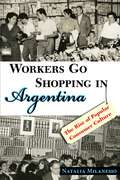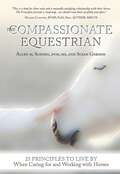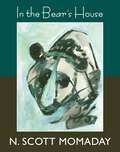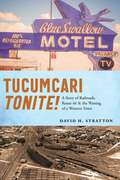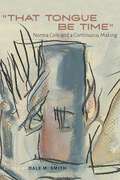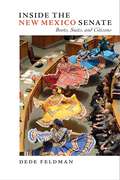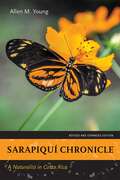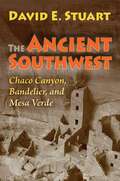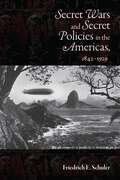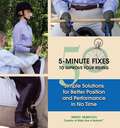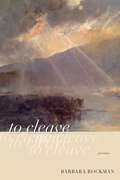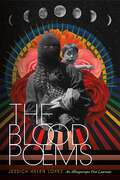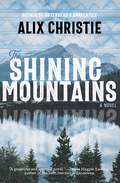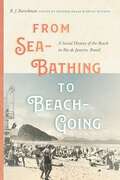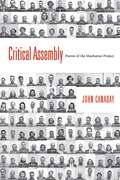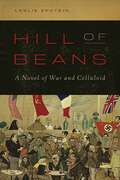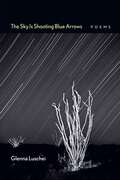- Table View
- List View
Bugsy's Shadow: Moe Sedway, Bugsy Siegel, and the Birth of Organized Crime in Las Vegas
by Larry D. GraggThe story of Moe Sedway, the eponymous "shadow" to Benjamin &“Bugsy&” Siegel, from his days as Bugsy's right hand associate to his suspected role in Bugsy's unsolved disappearance, and the role Sedway played in the creation of modern Las Vegas.Early in the Prohibition era, Moe Sedway became part of the New York organized crime gang led by Meyer Lansky and Benjamin &“Bugsy&” Siegel. A loyal and highly effective operative for Siegel, Sedway eventually gained monopoly control of the race wire service in Las Vegas and also became an effective casino manager of the Las Vegas Club, El Cortez, and the Rex Club.A breach in their relationship led to rumors that Sedway had gained Lansky&’s approval for a &“hit&” on Siegel. The unsolved mystery of who murdered Bugsy in 1947 has spawned numerous theories about the identity of the hitman, but regardless of who pulled the trigger, Bugsy&’s death opened the way for Moe to flourish as his own man at last. Long overshadowed by Bugsy in the annals of organized crime in America, Moe Sedway is now at last brought out into the light in this riveting tale of the sensational life and times of one of Vegas&’s most mysterious and little-known figures.
Unruly Tree: Poems (Mary Burritt Christiansen Poetry Series)
by Leslie UllmanThe cryptic prompts—fragments, really—of Brian Eno&’s and Peter Schmidt&’s Oblique Strategies unveiled themselves to Leslie Ullman as rough translations from an obscure language. As an experiment, Ullman used each one as a poem title, and in doing so she accessed a thrill of freedom, uncertainty, and propulsion beyond her own familiar patterns and landscapes. In the process, she found herself exploring the literary, visual, and musical arts from angles that had never occurred to her before.Unruly Tree showcases the most successful of Ullman&’s play, and the result is a marvelous work by a poet at the height of her craft. At its heart this book is about process itself—even when it applies to experiences outside the arts—and about reclaiming an inner freedom many of us lose in our lives as adults in these noisy, rancorous times.
Mountain Time: A Yellowstone Memoir
by Paul SchulleryMountain Time, a thoughtful and often moving work, is not only about Yellowstone as a superb sample of American wildness, . . . but also about a man named Paul Schullery and his relationship to it. This fact gives the book much richness and power, for Schullery comes across clearly as a caring, observant, undogmatic person whose reasonable and intelligent opinions are reinforced by plenty of facts. In a certain mood, it is possible to wish (vainly) that people of his civilized caliber were the only ones allowed to open their mouths very widely on any subject that really matters, as Yellowstone definitely does.--John Graves, author of Goodbye to a River and From a Limestone LodgePaul has pushed outdoor writing to new limits. I pay him the highest compliment I can: I wish I had written Mountain Time.--Lionel Atwill, Sports Afield
Detonography: The Explosive Art of Evelyn Rosenberg
by Evelyn RosenbergArtist Evelyn Rosenberg invented a remarkable technique to make sculpture by forming metal with plastic explosives. After many months of experiments in the mid-1980s with an Israeli explosives engineer, she discovered how to refine this unique process to make large-scale, intricately designed works of art and named the new art form Detonography. Working in the New Mexico desert, near where the first atomic bomb was tested at the Trinity Site, she transforms powerful weapons of destruction into tools of creation.In this book, the first to showcase her work, she describes the history and genesis of Detonography and explains from conception to installation how a piece of explosive art is made. Her method is documented step by step with the richly detailed photography of John Trotter, a personal history, and an essay by Gideon Sivan, the explosives expert whose technical work served as Rosenberg&’s original inspiration.
MEAN/TIME: Poems (Mary Burritt Christiansen Poetry Series)
by Grace BauerBauer&’s newest collection is an exploration of time: how we perceive it and its passing, how we use language to describe the lived experience that time informs, and the transformations we undergo during its passing.
A Black Physician's Struggle for Civil Rights: Edward C. Mazique, M.D.
by Florence RidlonThis powerful biography traces the career of an African American physician and civil rights advocate, Edward Craig Mazique (1911–1987), from the poverty and discrimination of Natchez, Mississippi, to his status as a prominent physician in Washington, DC. This moving story of one man&’s accomplishments, in spite of many opposing forces, is also a chapter in the struggle of African Americans to achieve equality in the twentieth century.At a time when black people were being denied entry into the American Medical Association and were not permitted to join the staffs of most hospitals, Dr. Mazique was the president of the Medico-Chirurgical Society and the National Medical Association. Dr. Mazique worked closely with Martin Luther King Jr., Presidents John F. Kennedy and Lyndon B. Johnson, and black physicians to expand the availability of health care. Much of this story is in Dr. Mazique&’s own words, taken from interviews with the author. What emerges from this biography is a picture of an exceptional but very human man who, despite discrimination and repression, excelled beyond all expectations.
The Problem You Have: Stories (Lynn and Lynda Miller Southwest Fiction Series)
by Robert Garner McBreartyThe Sisyphean characters in The Problem You Have may not be pushing a giant rock up a hill, but they are unlikely to ever get where they are going. Yet despite knowing that, they push on and work with graceful resignation. In McBrearty’s newest collection a diverse group of characters encounter turning points. A minor criminal seeking warmth on a frigid night climbs through a farmhouse window to discover more than he ever expected. A dying soldier recalls the man he left behind. In one horrible afternoon, a college professor realizes the only sanctuary is love. An over-the-hill pitcher refuses to get off the mound. A young couple meets the couple they never want to become. Some of the stories hold dark themes, yet McBrearty masterfully infuses the work with humor and compassion, rendering the characters within them relatable. Even with themes of loss or what might have been, the collection sings notes of what might yet be, for both the characters and the reader.
Steinbeck's Imaginarium: Essays on Writing, Fishing, and Other Critical Matters
by Robert DeMottIn Steinbeck&’s Imaginarium, Robert DeMott delves into the imaginative, creative, and sometimes neglected aspects of John Steinbeck's writing. DeMott positions Steinbeck as a prophetic voice for today as much as he was for the Depression-era 1930s as the essays explore the often unknown or unacknowledged elements of Steinbeck&’s artistic career that deserve closer attention. He writes about the determining scientific influences, such as quantum physics and ecology, in Cannery Row and considers Steinbeck&’s addiction to writing through the lens of the extensive, obsessive full-length journals that he kept while writing three of his best-known novels—The Grapes of Wrath, The Wayward Bus, and East of Eden. DeMott insists that these monumental works of fiction all comprise important statements on his creative process and his theory of fiction writing. DeMott further blends his personal experience as a lifelong angler with a reading of several neglected fishing episodes in Steinbeck&’s work. Collectively, the chapters illuminate John Steinbeck as a fully conscious, self-aware, literate, experimental novelist whose talents will continue to warrant study and admiration for years to come.
Workers Go Shopping in Argentina: The Rise of Popular Consumer Culture
by Natalia MilanesioIn 1951 an Argentine newspaper announced that the standard of living of workers in Argentina was &“the highest in the world.&” More than half a century later, Argentines still look back to the mid-twentieth century as the &“golden years of Peronism,&” a time when working people, who had struggled to make ends meet a few years earlier, could now buy ready-made clothing, radios, and even big-ticket items like refrigerators. Milanesio explores this period marked by populist politics, industrialization, and a fairer distribution of the national income by analyzing the relations among consumers, consumer goods, manufacturers, advertising agents, and Juan Domingo Perón&’s government (1946–1955).Combining theories from the anthropology of consumption, cultural studies, and gender studies with the methodologies of social, cultural, and oral histories, Milanesio shows the exceptional cultural and social visibility of low-income consumers in postwar Argentina along with their unprecedented economic and political influence. Her study reveals the scope of the remarkable transformations fueled by the new market by examining the language and aesthetics of advertisement, the rise of middle- and upper-class anxieties, and the profound changes in gender expectations.
Compassionate Equestrian
by Susan Gordon Allen SchoenThis marvelous book, borne of a unique collaboration between Dr. Allen Schoen—a world-renowned veterinarian and author—and trainer and competitor of many years Susan Gordon, introduces the 25 Principles of Compassionate Equitation. These Principles, conceived by Dr. Schoen and Gordon, are a set of developmental guidelines, encouraging a level of personal awareness that may be enacted not only through the reader's engagement with horses, but can be extended to all humans and sentient beings he or she encounters. The 25 Principles share stories and outline current, peer-reviewed studies that identify and support methods of training, handling, and caring for horses that constitute a safe, healthy, non-stressful, and pain-free environment. Through their Compassionate Equestrian program, the authors encourage all involved in the horse industry to approach training and handling with compassion and a willingness to alleviate suffering. By developing deeper compassion for their own horses, and subsequently, all equines, equestrians transcend their differences in breed preferences, riding disciplines, and training methodologies. This leads to the ability to empathize and connect more closely with the &“global collective&” of horses and horse people. In doing so, a worldwide community of compassionate equine practitioners and horse owners will emerge, which will not only benefit the horses: People involved with horses are found in many influential segments of society and have the potential to affect wide circles of friends, acquaintances, and co-workers from every walk of life. These are simple changes any horse person can make that can have a vast impact on the horse industry and society as a whole.
In the Bear's House
by N. Scott MomadayLet me say at the outset that this book is not about Bear (he would be spoken of in the singular and masculine, capitalized and without an article), or it is only incidentally about him. I am less interested in defining the being of Bear than in trying to understand something about the spirit of wilderness, of which Bear is a very particular expression. . . . Bear is a template of the wilderness.--from the IntroductionSince receiving the Pulitzer Prize in 1969 for his novel House Made of Dawn, N. Scott Momaday has had one of the most remarkable careers in twentieth-century American letters. Here, in In the Bear's House, Momaday passionately explores themes of loneliness, sacredness, and aggression through his depiction of Bear, the one animal that has both inspired and haunted him throughout his lifetime.With transcendent dignity and gentleness, In the Bear's House celebrates Momaday's extraordinary creative vision and evolution as one of our most gifted artists.
Tucumcari Tonite!: A Story of Railroads, Route 66, and the Waning of a Western Town
by David H. StrattonTucumcari, New Mexico, was founded in 1901 by the Rock Island Railroad and soon had major railroad lines converging there from Chicago, Los Angeles, and Memphis as well as a northern branch line from the Dawson coalfields. The federal highway system established Route 66, the &“Main Street of America,&” through the middle of town in 1926. Tucumcari flourished as a tourist mecca, welcoming travelers with its blazing displays of neon lights. But mergers, reorganizations, and financial problems of the railroads, as well as the creation of the interstate highway system that bypassed small places, brought a sharp decline to the once-prosperous town.Tucumcari Tonite! blends in-depth research and personal and family experiences to re-create a &“memoir&” of Tucumcari. Drawing on newspapers and government documents as well as business records, personal interviews, and archival holdings, Stratton weaves a poignant tale of a western town&’s rise and decline—providing a prime example of the destructive forces that have been inflicted on small towns in the West and all across America.
"That Tongue Be Time": Norma Cole and a Continuous Making (Path to Open)
by Dale M. SmithOriginally from Canada, Norma Cole is a revered writer and visual artist who has authored and translated over thirty books and chapbooks. Though highly esteemed internationally in both visual art and poetry circles, Cole&’s association with the New College of California and her influence on artists and poets has been overlooked by scholars. In &“That Tongue Be Time,&” Dale M. Smith seeks to remedy this oversight by bringing together sixteen noted scholars, editors, and poets to examine Cole&’s poetry, translations, and visual art in order to place her within the larger scholarly conversation about contemporary poetry and poetics. The book also includes a number of black-and-white reproductions of Cole&’s art and a contextual introduction by Smith. &“That Tongue Be Time&” provides a groundbreaking look at Norma Cole&’s lasting influence on multiple generations of poets, visual artists, and scholars and should be on the shelf of anyone interested in contemporary poetry.
Inside the New Mexico Senate: Boots, Suits, and Citizens
by Dede Feldman&“Completely honest and highly informative. To look at a legislative body is to observe democracy in the raw—with all its diverse characters and influences and its many conflicts, compromises, and achievements. Dede Feldman, a first-rate observer and chronicler, shows us the insides of the New Mexico State Senate.&”—Fred Harris, former U.S. Senator and professor emeritus of political science, University of New MexicoElected to New Mexico&’s state senate in 1996, Dede Feldman faced the challenges that confront state legislators around the country along with some that are uniquely New Mexican. In this forthright account of the workings of New Mexico&’s legislature, she reveals how the work of governing is actually accomplished.In New Mexico&’s part-time citizen legislature, Spanish may be spoken in the halls of the capitol as often as English, and Native American issues are often pivotal. But each year the Land of Enchantment&’s legislators, like those in other states, must balance revenues and expenditures, tangle with lobbyists, and struggle with redistricting and campaign finance reform. State legislatures&’ approaches to air pollution, drunk driving, and chronic disease, Feldman&’s book reveals, find their way into national law after they&’ve been road tested on the highways of various states.
Sarapiquí Chronicle: A Naturalist in Costa Rica. Revised and Expanded Edition.
by Allen M. Young&“Young . . . brings the trained eye of an entomologist and an unabashed admiration for the beauty of nature to this engaging and informative account of his experiences during twenty-one years of fieldwork in Costa Rica&’s rainforests.&”—Publishers Weekly&“A splendid read. For newcomers to the moist tropics, and for any but the most sated old-timers, it can be commended for an entertaining account of a locality where life is lived to the full—by all species, including the human observer.&”—Norman Myers, New ScientistThe abundant insect life of the rainforests of northeastern Costa Rica is the subject of this engaging book, first published over twenty-five years ago and now including two new chapters on the rise of ecotourism in the region.
The Ancient Southwest: Chaco Canyon, Bandelier, and Mesa Verde. Revised edition.
by David E. StuartOver twenty-five years ago, David Stuart began writing award-winning newspaper articles on regional archaeology that appealed to general readers. These columns shared interesting, and usually little-known, facts and stories about the ancient people and places of the Southwest. By 1985, Stuart had penned enough columns to fill a book, Glimpses of the Ancient Southwest, which has been unavailable for years. Now he has rewritten most of his original articles to include recently discovered information about Chaco Canyon, Bandelier, and Mesa Verde. Stuart's unusual perspective focuses on both the past and the present: Want to know why gasoline now costs $4.00 a gallon, and is headed higher, yet we have no instant solution? Chacoan, Roman, even Egyptian archaeology all provide elemental answers. The Ancient Southwest shares those with us.
Secret Wars and Secret Policies in the Americas, 1842-1929
by Friedrich E. SchulerThe conflicts that culminated in the First and Second World Wars had their origins in the rise of imperial powers in North America, Europe, and Asia in the late nineteenth century and the imperialist quests for the resources of colonies and former colonies. American expansionists, encouraged by a growing U.S. Navy, nurtured U.S. policies with illusions of easy access to South America. Policy makers in the fledgling empires of Germany, Japan, Spain, and Italy relied on clandestine means to rival U.S. ambitions. In this original and thoroughly researched book, based on new sources from previously unused collections in Germany and Spain, Friedrich E. Schuler details their attempts to suborn ethnic groups within Latin America but also the United States to establish ethnic beachheads that would serve to undermine U.S. interests. These deeply disturbing lessons became central historical reference points for U.S. policy makers during World War II.Not surprisingly, though rarely covered in Latin American historiography, Latin American nations, but also Spain, developed their own plans to exploit these imperialist rivalries after World War I. The resulting intrigue and subterfuge revealed in this revisionist study add a fascinating new dimension to our understanding of transpacific and transatlantic politics during this critical period of world history.
50 5-Minute Fixes to Improve Your Riding
by Wendy Murdoch5 minutes a day is all the time you need to achieve:Better balance in the saddleImproved body control from head to toeIncreased influence with your seatFlawless leg position and subtle aidingQuieter, softer hands and contact your horse can trustLess physical stiffness, tension, and riding-related painConfidence in your ability to communicate with your horsePlus, in just 5 minutes you can improve a horse that's:Unwilling to go forward or dead to the legHollow-backed, high-headed, or above the bitHeavy on the forehand and unbalancedA chronic puller, leaner, or head-tosserStart or end your riding sessions with Wendy Murdoch's 5-Minute Fixes, and you'll be amazed how quickly you can replace old habits with new ones, get out of your riding rut, and transform what youcan'tdo to what youcando…naturally, capably, comfortably, and consistently alongside a happy riding partner—your horse.
to cleave: poems (Mary Burritt Christiansen Poetry Series)
by Barbara RockmanFull of sensory detail and written with astute observation, to cleave searches for and lays bare the mythic moments one finds even in the most ordinary life. In this stunning collection Rockman explores the themes of aging; our relationships to our bodies; marriage; and the surprises, griefs, and joys of motherhood. Each of the seven sections urges readers to view their daily lives with renewed curiosity and wonder.
The Blood Poems (The Albuquerque Poet Laureate Series)
by Jessica Helen LopezThe Blood Poems is one part bloodletting, one part healing, and one part sensuous celebration as Jessica Helen Lopez lays out what it means to be a strong brown woman, a single mother, and the kickass bard that the twenty-first century needs. Lopez openly faces a damaging childhood, sex, divorce, and racial injustice in these poems. She proves that love is as complicated as lovemaking—messy and lusty, raucous and powerful, capable of amazing highs and abysmal lows. She proves that when a woman learns to love herself, she will live a fierce and full life and teach her daughters to do the same.
The Shining Mountains: A Novel
by Alix ChristieThe year is 1838. A young Scotsman forced from his homeland arrives at Hudson&’s Bay. Angus McDonald is contracted to British masters to trade for fur. But the world he discovers is beyond even a Highlander&’s wildest imaginings: raging rivers, buffalo hunts, and the powerful daughter of an ancient and magnificent people. In Catherine Baptiste, kin to Nez Perce chiefs, Angus recognizes a kindred spirit. The Rocky Mountain West in which they meet will soon be torn apart by competing claims: between British fur traders, American settlers, and the Native peoples who have lived for millennia in the valleys and plateaus of the Shining Mountains&’ western slopes.In this epic family saga, the real history of the American West is revealed in all its terror, beauty, and complexity. The Shining Mountains brilliantly limns a world now long forgotten: of blended cultures seeking allies, trading furs for guns and steel, and a way of life in collision with westward colonial expansion.
From Sea-Bathing to Beach-Going: A Social History of the Beach in Rio de Janeiro, Brazil (Diálogos Series)
by B.J. Barickman2023 Honorable Mention, Warren Dean Prize in Brazilian HistoryIn From Sea-Bathing to Beach-Going B. J. Barickman explores how a narrow ocean beachfront neighborhood and the distinctive practice of beach-going invented by its residents in the early twentieth century came to symbolize a city and a nation. Nineteenth-century Cariocas (residents of Rio) ostensibly practiced sea-bathing for its therapeutic benefits, but the bathing platforms near the city center and the rocky bay shore of Flamengo also provided places to see and be seen. Sea-bathing gave way to beach-going and sun-tanning in the new beachfront neighborhood of Copacabana in the 1920s. This study reveals the social and cultural implications of this transformation and highlights the distinctive changes to urban living that took place in the Brazilian capital. Deeply informed by scholarship about race, class, and gender, as well as civilization and modernity, space, the body, and the role of the state in shaping urban development, this work provides a major contribution to the social and cultural history of Rio de Janeiro and to the history of leisure.
Critical Assembly: Poems of the Manhattan Project (Mary Burritt Christiansen Poetry Series)
by John CanadayWith technical mastery and remarkable empathy, Canaday introduces readers to the people involved in the creation and testing of the first atomic bomb, from initial theoretical conversations to the secretive work at Los Alamos. Critical Assembly also includes brief biographies, notes, and a bibliography for further exploration about this critical event in world history.
Hill of Beans: A Novel of War and Celluloid
by Leslie EpsteinThe film Casablanca opens with the words, &“With the coming of the Second World War, many eyes in imprisoned Europe turned hopefully, or desperately, toward the freedom of the Americas.&” Leslie Epstein&’s Hill of Beans is the story of how one nation, one industry, and in particular one man responded to that desperate hope. That man is Jack Warner. His impossible goal is to make world events—most importantly, the invasion of North Africa by British and American forces in 1942—coincide with the release of his new film about a group of refugees marooned in Morocco. Arrayed against him are Stalin and Hitler, as well as Josef Goebbels, Franklin Roosevelt, a powerful gossip columnist, and above all a beautiful young woman with a terrible secret. His only weapons are his hutzpah and his heroism as he struggles to bring cinema and city, conflict and conference together in an epic command performance.Hill of Beans is the novel that Leslie Epstein—the son and nephew of Philip and Julius Epstein, the screenwriters of Casablanca—was born to write.
The Sky Is Shooting Blue Arrows: Poems (Mary Burritt Christiansen Poetry Series)
by Glenna LuscheiIn this new book Glenna Luschei&’s poems take her and her readers around the world, including to Tunisia and Colombia, but in the end they return to center on the American West, where her heart lies. Celebrating life, travel, aging, and nature, this new book shines with Luschei&’s view of the world.
